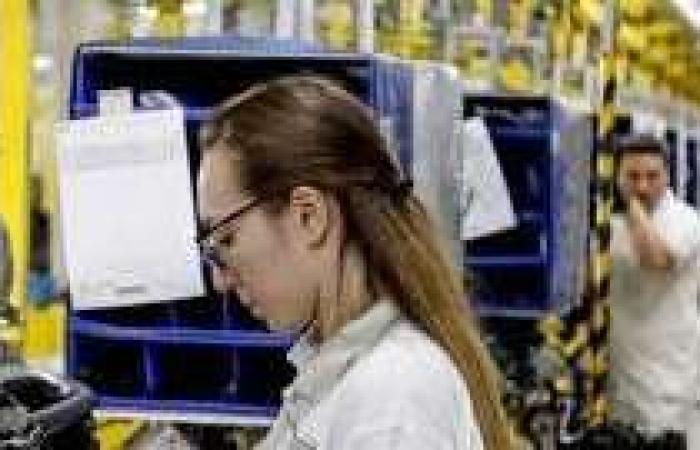The dynamism of the Abruzzo economy, in addition to the largely positive export result, is also confirmed by the trend of the labor market. The new jobs compared to the same period of the previous year amounted to 2 thousand units, raising the total number of jobs to 502 thousand. The growth percentage is 0.5% compared to the national average of 1.7%. However, it should be kept in mind that in the first quarter of 2023 Abruzzo had recorded employment growth of 17 thousand units compared to 2022.
The employment rate rises to 61.6% (60.6% in 2023) and the unemployment rate falls to 7.3%, lower than the national figure for the first time (7.7%). Both values give the idea of a Region in motion and of an economy that has been able to face continuous and in some ways devastating crises.
THE VIRTUOUS CIRCLE. Employment growth should not be underestimated for at least three reasons: to) leads to an increase in the level of household consumption; b) offers reassuring prospects for business investments; c) expands the range of taxpayers from a tax perspective. A sort of virtuous circle that would benefit the entire Abruzzo community. This is why these data should not be interpreted in an aseptic manner but facts and reflections are hidden behind the numbers.
THE TWO FIXED POINTS. The first consideration is that Abruzzo has not stopped in recent years. The recovery in exports and employment makes it clear that the Region is experiencing an evolutionary phase even compared to the pre-pandemic period. Many companies, even of modest size, have carried out a corporate restructuring process in tune with the changes expressed by the market and international competition, acquiring awareness regarding the digital and ecological transition. The second consideration is that the industry remains fundamental for the future of Abruzzo. Production is the true economic strength of the Region, because it is the industry that innovates, faces the challenges of competition, carries out research and development, competes with foreign markets and projects the Region into the future. In short, it makes Abruzzo more modern and competitive.
THE ADDED VALUE. Services can accompany this virtuous path in order to make it even more incisive and therefore capable of generating new income and new employment. The third consideration is that it seems more appropriate than ever to strengthen the process of rapprochement between companies and institutions. The positive relationship between the political component and economic entrepreneurship contributes to producing trust, overcoming the uncertainties existing in the market, ensuring the coordination of policies in the territory and representing a guarantee for the entire socio-economic fabric.
In this way, a modern and dynamic interpretation is given to localism, such as to overcome a certain debate that takes place within the confines of the “everyday”, to instead project itself onto the terrain of priorities, strategies and planning.
THE CRUCIAL POINTS. Obviously, the Abruzzo economy presents challenges to face. With reference to Italy, the Governor Panetta he indicated some that deserve attention, but which can also be extended to Abruzzo. They are called, for example, demographic decline, fragmentation of production processes, youth employment, green transition and, above all, productivity, the increase of which would also allow wages to grow.
In this context, the automotive supply chain is faced with a major problem regarding technological neutrality. For a region that exports over 10 billion euros, of which almost half is due to means of transport and which contributes significantly to the overall demand of Abruzzo, the issue appears of considerable importance. A problem that cannot be solved at a regional or national level. Individual countries have limited margins for intervention if it is true that around 800 billion would need to be invested per year, until 2034, to raise Europe’s technological rate and, therefore, address the transitions indicated above.
NOT JUST RULES. Now, the point is this: reconfiguring the production fabric in a sustainable way is a choice that requires time and appropriate financial resources. The industry cannot restructure itself with rules, regulations and deadlines alone. Europe seems to be strong in regulating every type of economic activity, from the use of pesticides to bathing, from restrictions on banks to public debt, but it is weak on a financial level and in the distribution of resources. Europe cannot be attentive only to budget rigor and inattentive to development policies. Europe must dialogue with businesses through an approach aimed at production, competition and problem solving. The 2035 deadline conceived in terms of an ultimatum and not of resources could have negative repercussions on regional and national industry as Europe runs the risk of remaining crushed between the USA and China, between incentives and protectionism on the one hand and the availability of materials first on the other. The only possible and credible response can only be that of common debt at European level, as happened during the Covid epidemic, a sort of Next Generation which lasts over time and, therefore, is capable of developing growth and not just regulations. * (economist)
©ALL RIGHTS RESERVED
For Latest Updates Follow us on Google News






